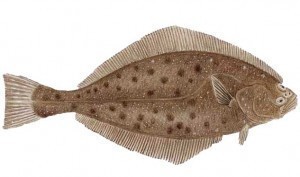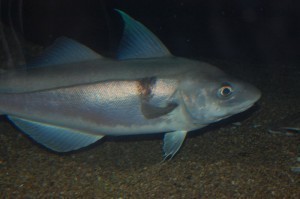Size of a Yellowfin Tuna
The size of the yellowfin tuna (Thunnus albacores) varies, but many can  weigh 300 lbs (136 kg). Some people report seeing yellowfin 94.1 inches (239 centimeters) long and weighing 441 lbs (200 kilograms). The biggest yellowfin tuna on record weighs 388 pounds (176 kg). The average species however are 40 to 180 cm long and weigh between 5 to 20 kg.
weigh 300 lbs (136 kg). Some people report seeing yellowfin 94.1 inches (239 centimeters) long and weighing 441 lbs (200 kilograms). The biggest yellowfin tuna on record weighs 388 pounds (176 kg). The average species however are 40 to 180 cm long and weigh between 5 to 20 kg.
Classification
The yellowfin tuna belongs to the genus Thunnus in the Scombridae family. It is from the Perciformes order of the Actinopterygii class.
Distribution
The fish can be found in the pelagic waters of the subtropical and tropical oceans throughout the world. The tuna is also known as ahi, its Hawaiian name. However, ahi in Hawaiian also refers to the bigeye tuna.
The fish should not be confused with the albacore, which is another type of tuna. However, the fish is also called albacora by the Portuguese and the French.
Physical Characteristics
Whatever the size of the yellowfin tuna, its yellow fins are always visible. The yellow fins are the anal fin and the second dorsal fin. The small fins situated between the tail and the fins are also yellow.
The anal and second dorsal are lengthy among the adult specimens. In some cases these fins will extend all the way to the tail, resembling scimitars. The yellowfin’s pectoral fins extend farther than those of the bluefin. However it is still shorter compared to the albacore.
The yellowfin’s body has a metallic blue color. This color changes to a silver at the belly. The belly has twenty lines vertically set.
Habitat
The fish is found at the ocean’s mixed surface layer, just over the thermocline. The range is usually at the top 328 ft (100 m), regardless of the size of the yellowfin tuna. But the fish is capable of swimming and diving much deeper. One yellowfin tuna was tracked at 246 ft (75 m). It even went to depths of 578 m, 982 m and 1160 m. 1160 m is 3800 ft deep.
Behavior
The deep diving seems to occur more frequently at daytime. During evenings the tuna prefers to stay in shallow waters. The tuna is a schooling fish and rarely moves out of it.
Scientists have observed that the yellowfin sometimes goes to the shorelines under certain conditions. This behavior has been observed at Hawaii and other islands in the Caribbean, Indian Ocean and Western Pacific. Yellowfin feeding on the shoreline is has been observed off the Ascension Island at the Atlantic.
Predation and Diet
Their diet consists of squid, pelagic crustaceans, and small fish. They also go after mackerel, saury and flying fish. Their natural predators are the wahoo, billfish, shark seabirds and other large tuna. Other predators are the blue marlin, the great white shark and the mako.
Despite the large size of the yellowfin tuna, it has not been able to escape overfishing. As a result, its population has been dwindling. Just like other threatened fish species, there are now efforts to curb fishing and increase its population.





